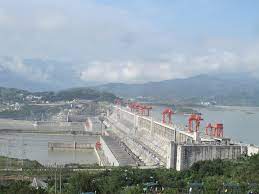
China Begins Building World's Largest Hydropower Dam in Tibet

 :
| Updated On: 22-Jul-2025 @ 12:17 pm
:
| Updated On: 22-Jul-2025 @ 12:17 pmSHARE
China has commenced construction of a massive hydropower dam on the Yarlung Zangbo River in Tibet, a project that Chinese officials claim could become the world’s largest source of hydroelectric power upon completion. The dam is part of a larger hydropower initiative in the Himalayan foothills and will consist of five hydropower stations on the Yarlung Zangbo River—known as the Brahmaputra downstream in India and the Jamuna in Bangladesh.
This ambitious project has been in planning for several years and received official approval in December of the previous year. It aligns with China's broader environmental and economic goals, particularly its aim to reach carbon neutrality and boost infrastructure in the Tibet Autonomous Region. The project was launched with a formal commencement ceremony attended by Chinese Premier Li Qiang, as reported by the state-run Xinhua News Agency.
The generated electricity will be transmitted to various regions in China to support energy needs and reduce carbon emissions, while also addressing local electricity demands within Tibet. The entire undertaking is expected to cost around 1.2 trillion yuan (approximately $167.1 billion), making it one of the most expensive and extensive hydropower projects globally.
However, the mega-dam has raised geopolitical and environmental concerns, particularly from neighboring India. In January, India stated that it had conveyed its concerns to China, emphasizing that it would continue to monitor the project and take necessary steps to protect its interests. The Indian Ministry of External Affairs urged China to ensure that the dam does not negatively affect the downstream states that rely on the Brahmaputra River, including Assam and Arunachal Pradesh.
In response, China's Ministry of Foreign Affairs asserted in December that the project would not cause any harm to downstream regions and pledged to maintain communication with affected countries. Despite such assurances, the dam has sparked anxiety among Tibetans and environmentalists. Critics worry about its potential impact on the delicate ecosystems of the Tibetan Plateau, home to unique flora and fauna, and known as the “Water Tower of Asia” due to its vast glaciers and river systems that provide freshwater to over 1.3 billion people across ten countries.
The Yarlung Zangbo River, regarded as the world’s highest river at over 5,000 meters above sea level, holds spiritual significance for Tibetans. The new dam is being constructed just 30 kilometers (18 miles) from the disputed India-China border, an area already tense with heavy military presence from both sides.
If successfully completed, the dam could generate nearly three times the energy of China’s current largest hydropower facility—the Three Gorges Dam on the Yangtze River. While the Three Gorges Dam, completed in 2003, generated massive amounts of electricity, it also led to the displacement of 1.4 million people and caused significant environmental degradation.
In contrast, Tibet’s sparse population has meant fewer displacements; only around 2,000 people were relocated for the construction of the Yagen Hydropower Station in 2015. Nevertheless, the potential impact of the new dam on regional ecosystems, downstream water flow, and geopolitical dynamics remains a subject of global attention and debate.